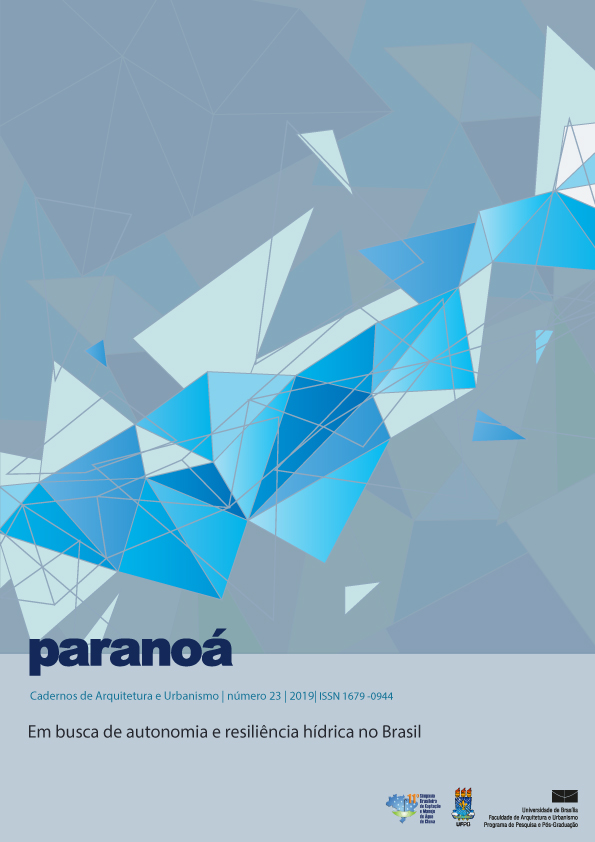O estudo dos componentes do ciclo hidrológico desde métodos tradicionais até o uso de sensoriamento remoto: uma revisão
DOI:
https://doi.org/10.18830/issn.1679-0944.n23.2019.11Keywords:
components of the hydrological cycle, remote sensing, interception, infiltration, surface runoffAbstract
The expansion of urban areas results in environmental impacts such as suppression of vegetation and increase of impermeable areas, which directly affect the quality and availability of water supply. Thus, it is important for urban planning activities to research and gather information about the elements of the hydrological cycle in urban areas, to understand its importance in the water cycle in order to establish mitigating measures for present and future impacts. The components of the cycle are basically rainwater interception areas, infiltration areas and surface runoff areas. Each one of those has a specific function in the water cycle. Researchers use classic/traditional or more recent techniques depending on the purpose of the research. This article gathers and presents relevant information regarding the methods used in this field and brings remote sensing as a useful tool, which has the capability to gather information quickly and efficiently, as an alternative to mapping and monitoring the elements of the hydrological cycle in urban environments.
Downloads
Downloads
Published
How to Cite
Issue
Section
License
Autores que publicam nesta revista concordam com os seguintes termos:
- Autores mantém os direitos autorais e concedem à revista o direito de primeira publicação, com o trabalho simultaneamente licenciado sob a Licença Creative Commons Attribution que permite o compartilhamento do trabalho com reconhecimento da autoria e publicação inicial nesta revista. http://creativecommons.org/licenses/by/4.0
- Autores têm autorização para assumir contratos adicionais separadamente, para distribuição não-exclusiva da versão do trabalho publicada nesta revista (ex.: publicar em repositório institucional ou como capítulo de livro), com reconhecimento de autoria e publicação inicial nesta revista.
- Autores têm permissão e são estimulados a publicar e distribuir seu trabalho online (ex.: em repositórios institucionais ou na sua página pessoal) a qualquer ponto antes ou durante o processo editorial, já que isso pode gerar alterações produtivas, bem como aumentar o impacto e a citação do trabalho publicado (Veja O Efeito do Acesso Livre).















